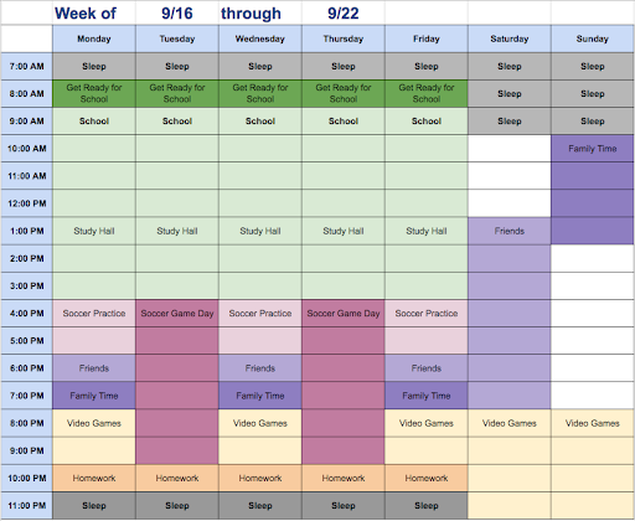|
You're in high school and you're thinking about getting a part-time job. Maybe you wish you had some extra cash to buy new clothes or school supplies. Or you may want to gain a little independence from your parents. (Don't you hate having to ask your parents for money every time you want to go get pizza with your friends?) For some, graduation is right around the corner and you’d like to get some money in the bank for your future. Whatever the case may be, you need cash, and you’re thinking about getting a part-time job for the school year. Working during the school year is a great option for many high schoolers. This is especially true if you are trying to gain experience, earn money, and develop new skills. But let’s face it, the average teen has a lot more on their plate than school, alone. We’re talking sports, clubs, youth groups, theater, music lessons, family obligations. And let's not forget about hanging out with friends. Many teens become overwhelmed when they think about adding a job into their jam-packed schedules. If you’re wondering how to balance work with the rest of your busy life, then you’ve come to the right place. Step 1 - Find the Time The first step is finding the time to work. One way to do this is to use a weekly planner. First list every one of your obligations -- school, homework, sports, clubs, and so on. In this list, be sure to include things that help you unwind or relax, such as spending time with friends, playing video games, or sleeping. Your list might look something like this:
Your week might look something like this: Notice the free time you still have in your day. If you've got at least 10-20 hours of free time every week, you have enough time to get a part-time job. Step 2 - Make the Time Let’s say you’re a little busier and your calendar looks more like this: You still have some free time, but not enough to work a reasonable number of shifts per week. If this describes you, then you have two options for getting a job. Option 1: work odd jobs that fit into your schedule. Option 2: make the time to get a part-time job.
If you're still reading, then you must be very committed to getting a part time job. That's great! Let's take a look at how you can make the time to work. First, examine your calendar with an editing eye. How many of your activities are necessary? How many are even things you want to do? What things are you willing to give up? Are there ways to re-organize your schedule so you could fit in a reasonable work schedule? If there are any activities you can live without doing, cross them out. If you could cut back on any activities and participate fewer times per week, cross out some of those, too. If you could move any activities to different days or times to free up larger blocks of time, do that too. Step 3 - Find the Job If reorganizing your schedule helped you find the time to work, then it's time to find a job that fits your schedule. Some job postings will say which shifts they are hoping to cover (nights, weekends, mornings, etc.). Others won't be as specific, but you may be able to make an educated guess based on when the business is open. For most jobs, assume they need to cover at least one weekend shift and at least a couple of days per week after school. When considering which jobs to apply for, use the schedule you created to make sure you are available. For example, if a job posting says they need a part-time worker to cover weekday mornings, you need not apply. You go to school on weekday mornings. If the job posting says they need someone to cover evening shifts, you may be available, and you should apply. For most job applications, you'll need to list your availability. Remember to include every day and time you could work. The more time you're available the more likely you are to get the job. Your employer is unlikely to schedule you to work during every free minute you've got. Step 4 - Make Adjustments Once you begin working, you may begin to feel overwhelmed, even though the job fits into your schedule. Feeling overwhelmed by a new schedule is totally normal. For many people, that overwhelmed feeling passes once they establish a new routine. But if it's been a few weeks and balancing work and life still seems like too much to bear, it's time to make adjustments. Go back to your weekly planner. Determine if you can give up any of your activities or reorganize your schedule so you have more free time. If this solves the problem, great. If not, read on. If you can't adjust your life schedule so it's less overwhelming, adjust your work schedule. Most employers recognize that school needs to be your top priority. With that in mind, don't be afraid to ask for fewer shifts per week. If you've shown you have great work ethic and have built a good rapport with your boss, this shouldn't be a problem. Conclusion Getting a part-time job for the school year is a great way for teens to make money and develop important skills. It's not right for everyone, but with a weekly planner and some basic time management skills, you can have a great work/life balance. |
Location |
|
Youth Employment Service is a program of the Ithaca Youth Bureau, which is a department of the City of Ithaca. We receive support from the Tompkins County Youth Services Department, the Tompkins County Workforce Development Board, and the Joint Youth Commission.


